(17163 products available)













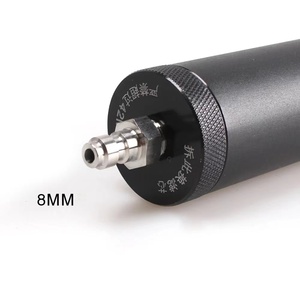
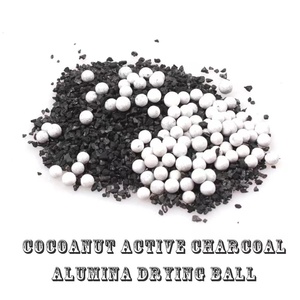
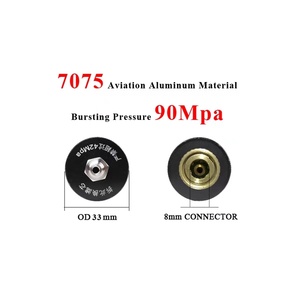
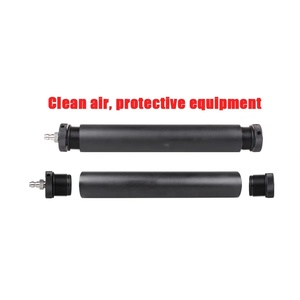









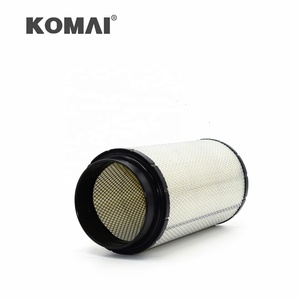










































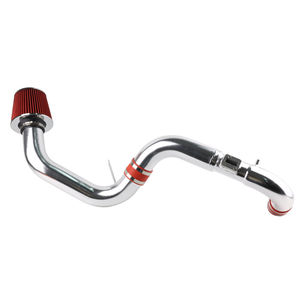







































































































































Dry air filters are devices used to remove airborne particles from the air. They use dry filter media that do not require any additional liquid to capture particles. They come in a variety of types, depending on the intended application and the specific dry air filter design.
Panel Air Filters
Panel air filters are widely used in residential and commercial HVAC systems. Their design is similar to panels, which makes them suitable for installation in filter frames or slots. They use a pleated filter media that maximizes the surface area to enhance particle capture.
HEPA Air Filters
HEPA dry air filters are well-known for their ability to trap small particles, including pollen, dust mites, and pet dander. They are ideal for applications where the air needs to be free from allergens and can be used in residential, commercial, and even healthcare settings.
Cartridge Air Filters
Cartridge filters are used in industrial processes and are designed for high air volumes and effective contaminant removal. Their cylindrical shape allows them to be used in vertical or horizontal filter housings. The filter media, which is often pleated, increases the surface area for better filtration efficiency.
V-Bank Air Filters
These filters have a V-shaped arrangement of pleats, which maximizes the use of space in high-efficiency air filtration systems. They are commonly used in industrial air and cleanroom applications, where maintaining strict air quality standards is essential.
Coalescing Air Filters
Coalescing filters are used to remove water and oil aerosols from the air, making it free from moisture and contaminants. They are essential in compressed air systems, ensuring that the air delivered is dry and contaminant-free.
Pre-filters
Pre-filters are designed for early-stage filtration, capturing larger particles to extend the life of downstream filters. They are commonly used in HVAC systems and industrial air systems, where cost efficiency and effective filtration are essential.
Electrostatic Air Filters
These filters use static electricity to attract and capture airborne particles. They are reusable; thus, they can be washed and dried, making them cost-effective. Electrostatic filters are used in residential HVAC systems.
Oil Mist Filters
Oil mist filters are specifically designed to capture oil aerosols and mists from the air. They are commonly used in metalworking operations, where oil-based coolants and lubricants are used in the air, ensuring a cleaner and safer work environment.
The specifications of a dry air filter are as follows:
Media
Air filters are made of various materials. The materials are used for different applications. The most common materials are paper, cotton, and synthetic fibers. Paper air filters are cheap and affordable. They are used in most personal vehicles. Cotton air filters are reusable. They have excellent filtration ability. Synthetic air filters offer a good combination of properties.
Micron Rating
The micron rating measures the size of particles that can be trapped by an air filter. It is measured in microns. One micron is equal to one-millionth of a meter. Air filters with a low micron rating can trap smaller particles. They have a higher filtration ability than those with a higher micron rating.
Airflow
Airflow is the volume of air that passes through an air filter in a given time. It is measured in cubic feet per minute (CFM). High-flow air filters allow more air to pass through. They improve engine performance. However, they have a trade-off in filtration efficiency.
Size and Dimensions
Dry air filters come in different sizes for various applications. The size and dimensions of an air filter determine its compatibility with the engine air intake system. Common measurements include diameter and length.
Frame Material
The frame material of a dry air filter provides support to the filtering media. The frame is made of durable materials. For instance, air filters are made of metal or plastic frames. The material must be resistant to corrosion and wear.
Sealing Method
The sealing method of a dry air filter ensures that the filter is sealed. It prevents unfiltered air from entering the engine. Common sealing methods include rubber gaskets and foam. The sealing method must be durable and provide a tight seal.
Maintainability is an important aspect of dry air filters. Here are some of the maintenance requirements:
Choosing the right dry air filter is crucial for ensuring optimal performance and longevity of equipment. Here are some factors to consider when choosing a dry air filter:
Replacing dry air filters is a pretty straightforward process that can be done in just a few steps. As a first step, users need to ensure they have the right replacement filter for their specific vehicle make and model. The replacement process goes as follows:
Q1: Why should someone prefer dry air filters over wet air filters?
A1: Dry air filters are preferred over wet air filters because they are more efficient at capturing particles and preventing engine damage. They also do not require wetting or moisture treatment, reducing the risk of mold growth. Additionally, dry filters typically have a faster airflow and are easier to handle and maintain.
Q2: How often should a dry air filter be replaced?
A2: The frequency of replacing dry air filters depends on various factors, including the environment, usage, and type of vehicle. Generally, a dry air filter should be replaced every 12,000 to 15,000 miles (or 20,000 to 24,000 kilometers) for normal driving. However, in dusty or off-road conditions, more frequent inspections and replacements may be necessary.
Q3: Can dry air filters be cleaned and reused?
A3: Some dry air filters are designed to be cleaned and reused. These filters are typically made of durable materials like synthetic fibers or pleated paper. A mild soap solution or a specialized air filter cleaner can be used to remove dirt and debris, after which the filter must be completely dry before reinstalling it. Always follow the manufacturer's guidelines to ensure the filter's effectiveness is maintained.
Q4: Do dry air filters fit all vehicles?
A4: No, dry air filters are not designed to fit all vehicles. Air filters are designed to fit specific makes and models. When purchasing a new dry air filter, it's essential to check the compatibility specifications and choose one that matches the engine's air filter housing to ensure a proper fit and optimal performance.
Q5: What is the difference between a dry air filter and a wet air filter?
A5: The primary difference between a dry and a wet air filter is the moisture content. A wet air filter uses water or a filtering oil to trap particles, while a dry air filter does not use moisture. This makes dry air filters more convenient and less prone to mold growth. Dry air filters are typically made of synthetic materials, whereas wet filters are often cotton or foam-based.